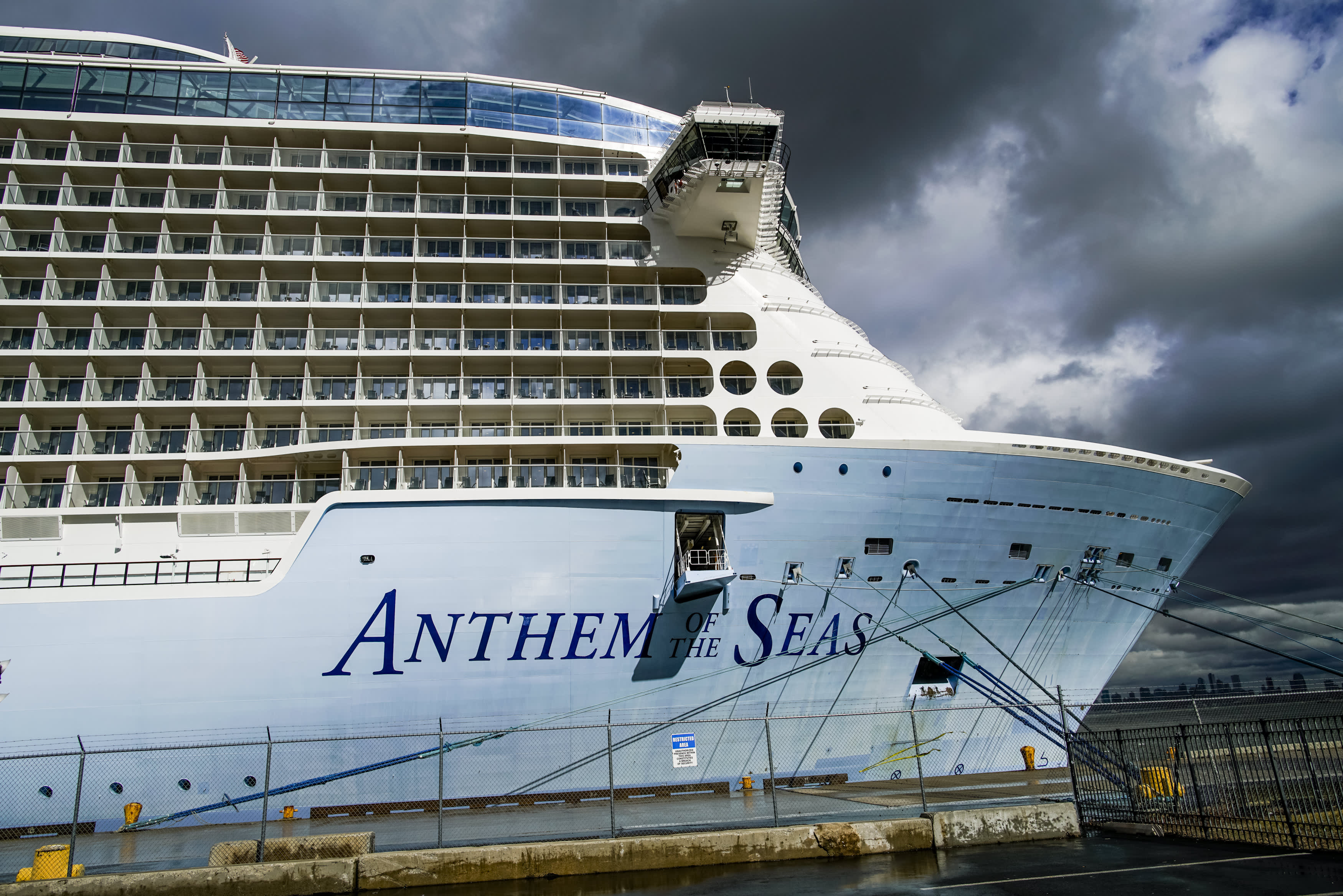Cruise lines are attempting to chart their path forward, but their return to the seas remains murky.
Royal Caribbean, which is burning roughly $375 million of cash a month, is attempting to get its ships back to sea as early as Aug. 1, but CEO Richard Fain suggested it’s a moving target.
“We’re not saying we’re confident we are starting on Aug. 1. We won’t come back until we’re sure we have done everything we can to work to protect the safety of our guests and crew,” Fain said on CNBC’s “Power Lunch” on Thursday.
Carnival is also hoping to restart some sailings on Aug. 1.
Fain said Royal Caribbean continues to work with authorities and health officials to detail a crisis playbook to minimize the risk of another cruise ship getting stranded once sailing resumes.
Among the changes under discussion are doctors’ notes for passengers above the age of 70 to ensure they are medically fit, as well removing all-you-can-eat buffets, which have become a staple on nearly every cruise.
“Expect to see no buffet food, empty seats in the show lounge, distance between lounge chairs and significantly reduced spa services,” Monty Mathisen, managing editor of the Cruise Industry News trade publication, told CNBC.
Summer is typically the peak season for the cruise industry, which is currently in survival mode following canceled voyages, high profile quarantines and criticism of its handling of Covid-19 outbreaks earlier this year.
With billions of dollars lost and cruise lines stocks down on average 60% this year, CEOs of the major cruise operators are fixated on resuming sailings while also redesigning the experience to make hygiene and safety a bigger priority.
The Royal Caribbean Cruise Ship Anthem of the Seas is docked at Cape Liberty port on February 7, 2020 in Bayonne, New Jersey.
Eduardo Munoz Alvarez | Getty Images
Before any U.S. ship accepts passengers, approval from the Centers for Disease Control and Prevention will be needed. The CDC enacted a no-sail order until July 24. Discussions are currently ongoing between the CDC, the Cruise Lines International Association trade group, cruise executives and the ports.
When the industry suspended sailing operations in mid-March, many ports denied entry to cruise lines that pleaded for entry so they could transport, in some cases, sick passengers to land.
However, ports — many of which are in Florida — didn’t allow cruise ships to disembark due to concerns the local hospitals would be overloaded.
Fain said that’s one of the essential questions his team is trying to answer. “How do we make sure that we have an established protocol made in conjunction with the ports so that we’re all set and when and if such a thing [infected passenger] happens, we are ready to go? That’s a big focus of the work that we have been doing and we will be doing. We have to have an established process in place.”
While the industry aims to detail a new plan, thousands of crew members remain stranded at sea due to ports denying access and the CDC mandating evacuation via chartered planes, which is costly for the cruise lines.
Fain said, “We have already managed to get a large percentage home. We have taken the extra step of coordinating to bring a lot of crew members from all over the fleet to assemble them on individual ships and then we’re using those ships to transport them home. Frankly it’s a difficult thing to do. It’s very complicated. It’s also very expensive.”
In addition to constructing an agreement with ports, sources say the cruise industry is deliberating how to isolate and medically evacuate an infected passenger to land more efficiently, while also having the ability to isolate and get them access to a larger medical staff on board for treatment.
The industry will have to develop a comprehensive door-to-door medical plan for both guests and crew. Expect to see isolation zones onboard.
Monty Mathisen
Cruise Industry News
“The industry will have to develop a comprehensive door-to-door medical plan for both guests and crew. Expect to see isolation zones onboard,” Mathisen said.
The three biggest cruise lines — Royal Caribbean, Carnival and Norwegian Cruise Line — also face the challenging task of redesigning their ships to get the green light from the CDC, while still preserving the experience many loyal cruise travelers have come to love, including Broadway-style shows, casino nights and water parks.
Fain expects to have fewer passengers on board his ships to allow for social distancing. ”My guess is that when we start, we will limit the number of people who can go onto a ship just as my neighborhood restaurants are beginning to open up.”
Before Covid-19, the cruise industry enjoyed running at 90%-100% capacity, packing thousands of passengers and crew members on large expansive ships.
Royal Caribbean boasts the largest of them all with its 228,081 ton Symphony of the Seas, which 22 restaurants, 42 bars and a 92-foot drop water slide. It can hold up to 6,680 passengers. The ship hit the market in 2018 and was a big success, and saw strong demand from customers. However, industry experts are now wondering whether these larger ships will be in high demand in a Covid-19 world.
Fain sees the size of the company’s ships as an advantage. “They are very large but actually that makes social distancing easier because we can spread people out. There’s more room per person so that makes it easier.”
